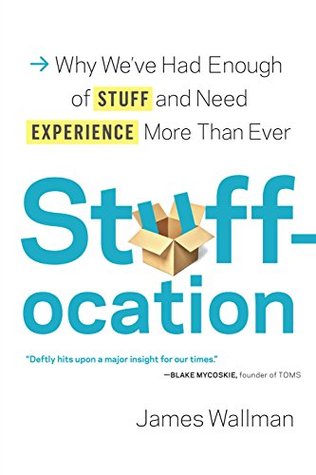More on this book
Kindle Notes & Highlights
Read between
September 4 - September 19, 2023
Men, so the results said, were not stressed by clutter.
in our modern culture women are far more likely to take responsibility for the home, and therefore are more likely to get stressed out by a home full of clutter.
Experts now believe that hoarding is twice as common as OCD, and that somewhere between 2 and 6 percent of people in developed countries suffer from it: there could be as many eighteen million hoarders in the United States, and three and a half million in the U.K.
how much stuff you have can have a major impact on your psychological well-being.
Rather than making us feel good, materialism is making millions of us feel joyless, anxious, and, even worse, depressed.
Many of us believe material things can solve emotional problems. But this, as the psychologist Oliver James wrote, is a “false promise.” Retail therapy does not work. Instead, it is more likely to make your problems worse—by putting you in debt, for instance.
In this new vision, people would buy a new car, clock, carpet, or a new anything, as Calkins wrote, “not because the old one is worn out, but because it is no longer modern. It does not satisfy their pride … because it is out of date, out of style, no longer the thing.”
“Change,” so the British historian Ian Morris believes, “is caused by lazy, greedy, frightened people looking for easier, more profitable and safer ways of doing things. And they rarely know what they are doing.”
Then, to bring minimalism into all areas of her life, she and her husband, Mark Tuttle, invented a game where they would hide things from the other. “If you didn’t notice it was gone, that meant you didn’t need it,” Tuttle says. “And that meant we could get rid of it.”
The average British woman now buys fifty-eight items of clothing each year. There are twice as many things in her wardrobe today as there were in 1980. There are twenty-two things in there she has never worn.
By 2007, Americans were buying sixty-seven items every year. That’s a lot of shirts, skirts, blouses, pants, and socks. It means Americans buy a new piece of clothing every four to five days.
“You get up in the morning, you go to work, you come home. If you’re lucky and the traffic wasn’t bad, you spend a couple of hours with the kids. Then you do the same thing the next day. You do that for five days and then you have two days to go out and spend the money you made. And the big reward for all that is a vacation once a year, when you get to buy things. And that’s it. That’s life. A lot of people can’t see a problem with that. But some of us aren’t happy with it. Some of us need more from our time on this planet. I do. I don’t think I would even know how to live that way anymore.
...more
Published in 1981 and again in 1993, Elgin’s book, Voluntary Simplicity: Toward a Way of Life That Is Outwardly Simple, Inwardly Rich,
Richard Easterlin made that clear in 1974 when he argued that higher income, above a certain point, did not lead to higher happiness. In the decades after, researchers noticed another truth: that more materialistic people tended to be less happy.
If you buy something with the aim of acquiring experience, that is, for the event or events it will provide, it is an experiential good. But if you buy something with the primary intention of having a physical, tangible object that you keep in your possession, it is a material purchase.
If you do something rather than have something, you are more likely to end up with something interesting to say.
Research has even shown that people prefer others who talk about experiences rather than material goods.
The Theory of the Leisure Class,
Conspicuous
people are more likely to be in your peer group, the people, in other words, whose opinion you are most interested in.
“rarity principle.” According to this idea, the bigger the difference between the number of people who have access to something and the number of people who know about it, the rarer and more valuable the thing is.
thanks to social media, more people now know about your experiences versus your stuff, and your experiences hold more social capital due to the rarity principle. As a result, experiences are now more visible, more tangible, and more valuable, and are more likely than material goods to contribute to status.
luxury advertisements—which are deliberately designed to make you feel inferior.
some people spend so much time posting updates that they are in it less for the enjoyment of the experience, and more so that everyone knows what they are up to.
Rather than showing off through physical goods, like previous generations used to, they are expressing their identities and getting status through experiences they can share through social media. And, as we’ve seen, they are not the only ones: there are 140 million people sharing their experiences on Twitter and more than a billion posting theirs on Facebook.
Substitution is the sort of mental shortcut that people use to avoid the time-consuming hard work of making complex decisions.
We would not require so many people to import, distribute, market, make ads for, and sell the shoes. If millions of people gave up their materialistic ways, there would be far fewer jobs.
Love clothes but can’t handle the wardrobe clutter? Rent the latest Diane von Furstenberg or Victoria Beckham design through Rent the Runway or Girl Meets Dress.
experiential travel market,


